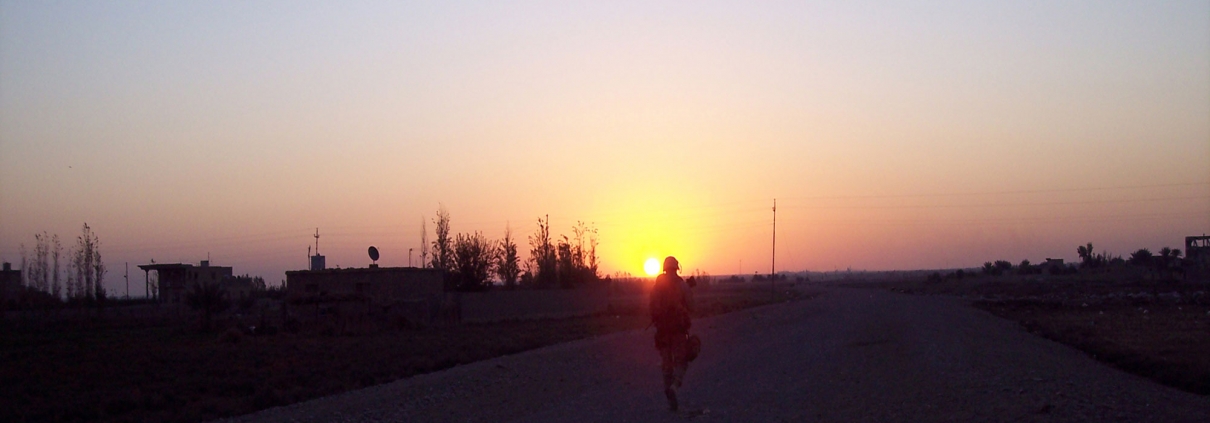Suicide Awareness Among Veterans: Why are Veterans at Higher Risk?
Suicide among service members and veterans deserves increased national attention.
The Department of Veteran Affairs estimates 20-22 veteran suicides occur every day and approximately 6,000 occur every year. These suicides account for 13.5% of deaths in the United States. Perhaps most shocking, more than 65,000 veterans have died by suicide since 2010—which is more than the total number of combat deaths accumulated during the Vietnam War and operations in Iraq and Vietnam combined.
These are staggering, tragic statistics, but we do our service members a disservice by not discussing them. We owe it to our veterans to shine a light on this ongoing public crisis and to learn the ways we can support them after the great sacrifices they have made for our country.
Why are Veterans at Higher Risk for Suicide?
Veterans are 1.5 times more likely to commit suicide than a non-veteran. Why?
Veterans not only experience extreme violence, fear, and grief during their military service, they also face a very unique set of circumstances when transitioning back to civilian life. The transition is not just a change of jobs but a change of virtually every aspect of their life. Leaving the military is just as demanding as entering the military, and the transition introduces a whole new set of risks.
These challenges include: returning to the work force or finding a new career path, adjusting to a different pace of life and new routines, integrating into a new community, reconnecting with family and friends, and relating to people who do not understand what they have endured. Veterans juggle all of these obstacles while dealing with visible and invisible wounds, such as Post-Traumatic Stress Disorder (PTSD), traumatic brain injury (TBI), depression, anxiety, physical disabilities, and more.
Unfortunately, many veterans do not receive the support needed to navigate this difficult transition and find themselves in hard circumstances, such as financial insecurity, homelessness, feeling isolated and hopeless, developing a substance abuse addiction, and dealing with disabilities and mental health on their own—which are all serious risks for veteran suicide.
Serving Those Who Served: What Can We Do for our Veterans?
There’s no doubt about it—veterans are the backbone of our country. We owe a debt of gratitude to the brave men and women who have sacrificed so much. They have put their lives on the line to protect our lives, rights, and freedoms. They have seen and experienced unspeakable violence, suffered psychological distress, and sacrificed their personal freedoms. Every service member, whether in active combat or in a support role, has been forever changed in some way.
Obviously, not enough can be done to honor, respect, and repay our veterans for their immense personal sacrifices. However, an important first step is becoming aware of veteran suicide risks and ensuring all veterans have access to affordable healthcare services, counseling, physical therapy, mental healthcare services, substance abuse treatment facilities, affordable housing, strong support systems, and the time and space to heal. It is not enough for veterans to simply survive their military experiences—all veterans deserve to thrive and create a life they love.
If you know a Veteran, pick up the phone and call them. It could mean the difference of them becoming a statistic. If you can’t help them, help them find someone who can.
The Epic Artwork Story
Epic Artwork & Photo all started in 2005 when Andrew Bourne was deployed to Iraq at the Syrian border. He needed a camera for intelligence reasons, so his wife Karen sent him a digital camera. He also photographed the life of the Iraqi people around him. After he returned to the states in 2006 and Karen had a chance to finally view all the images that he took, she realized that Andrew had captured beautiful and harrowing images that later earned him a gallery show.
While in Iraq, Andrew suffered a traumatic brain injury. When he was finally diagnosed in 2008, he was told he needed a hobby to help rework the neurons in his brain, so when he brought up doing live event photography to Karen, she encouraged him to do so. Not only was live event photography a tangible exercise in therapeutic mindfulness, but it also engaged the brain and encouraged the development of neuroplasticity.
Andrew and Karen Bourne are a traveling photography duo with incredible experience and passion. Check out Epic Artwork and Photo’s portfolio here to explore their live event photography and the images Andrew captured in Iraq.





Leave a Reply
Want to join the discussion?Feel free to contribute!